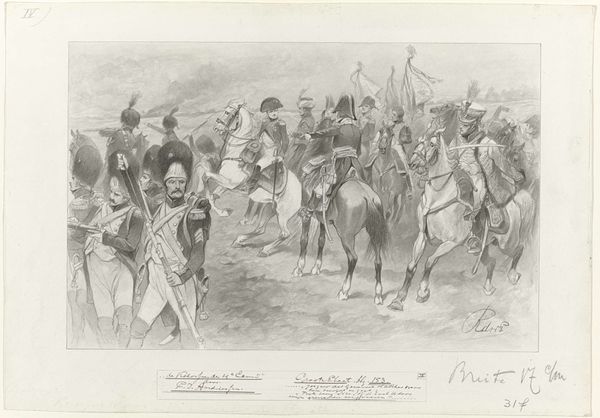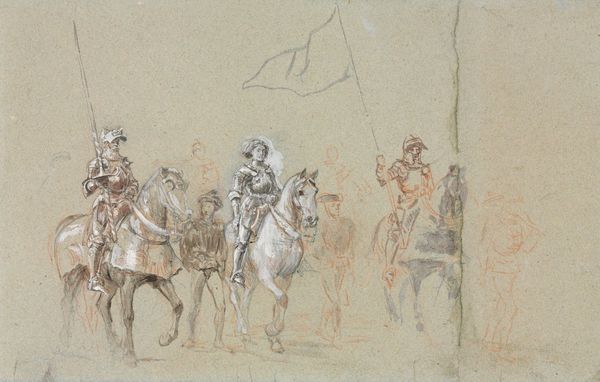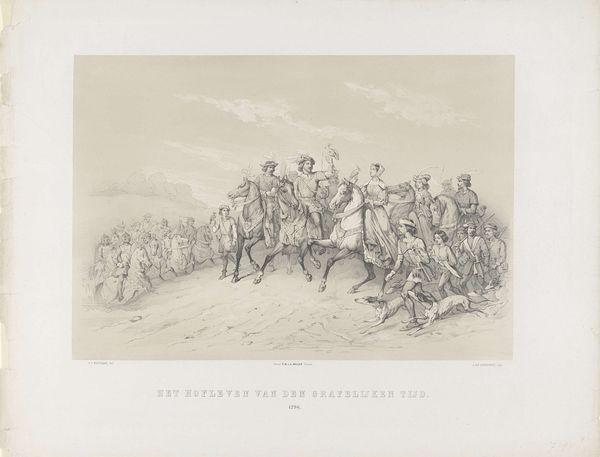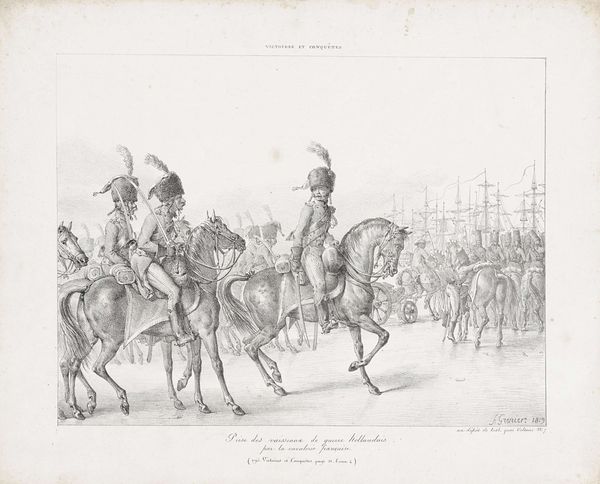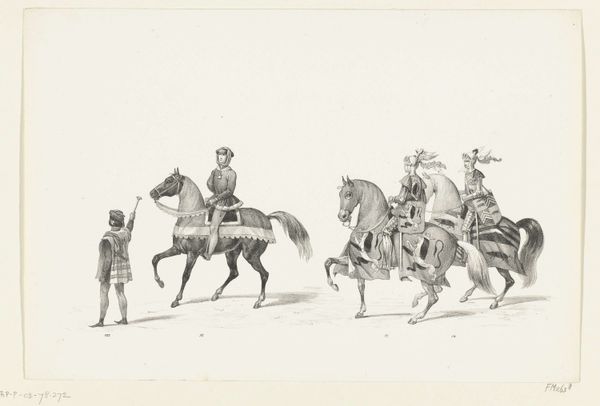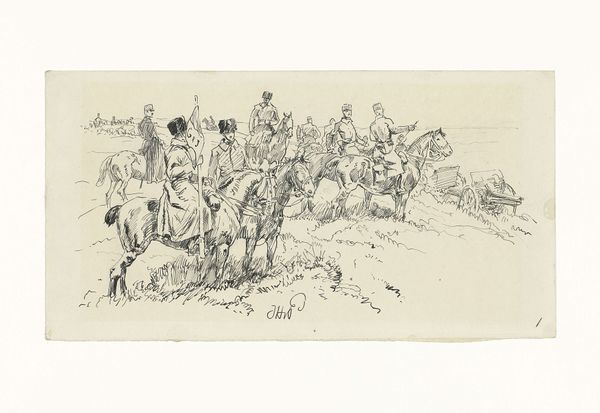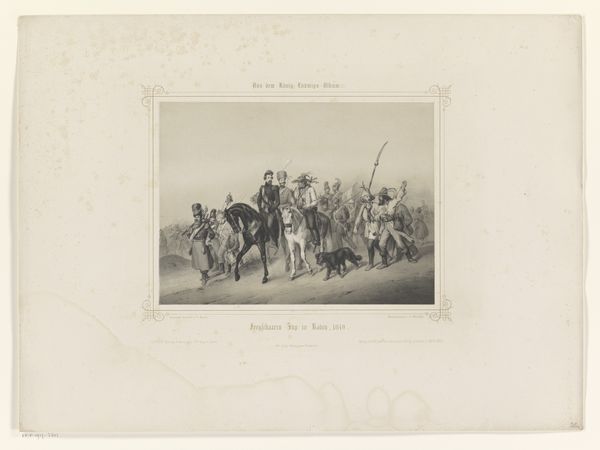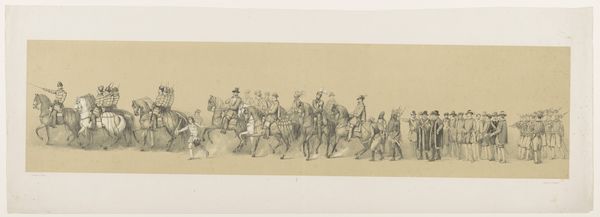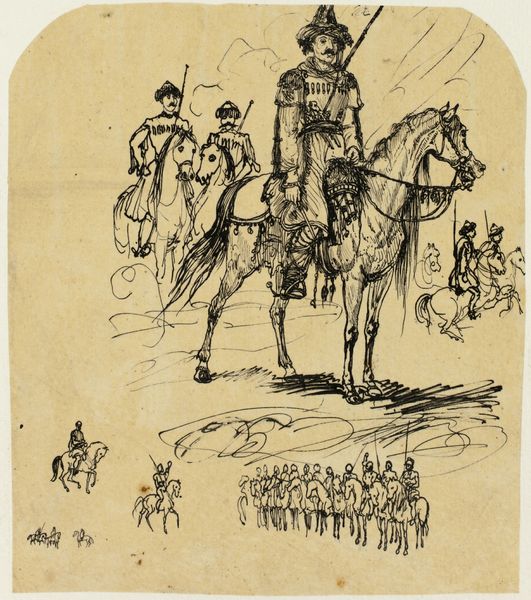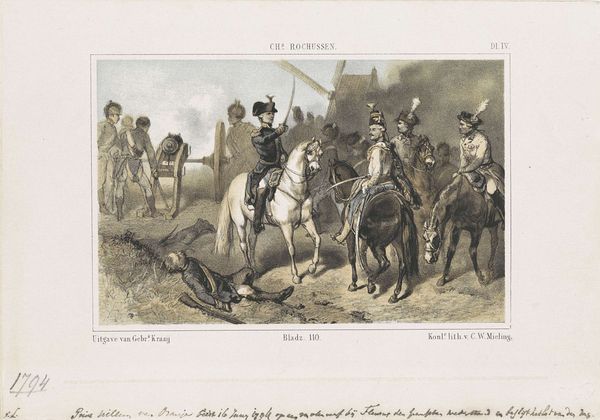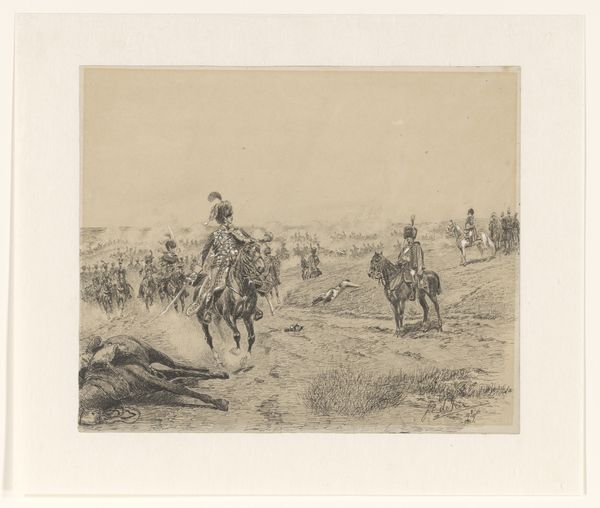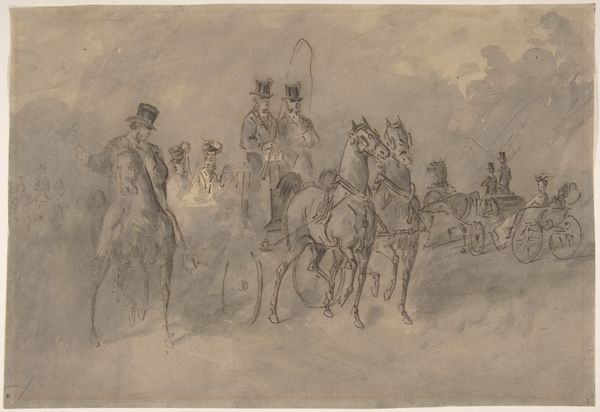
Ontwerp voor illustratie voor De Kolossus der Negentiende Eeuw door P.J. Andriessen (Textill., blz. 44); scène uit het leven van Napoleon 1877 - 1942
0:00
0:00
drawing, pencil
#
drawing
#
landscape
#
figuration
#
pencil
#
history-painting
#
academic-art
Dimensions: height 159 mm, width 219 mm
Copyright: Rijks Museum: Open Domain
Curator: Here we have a drawing, created between 1877 and 1942, titled "Ontwerp voor illustratie voor De Kolossus der Negentiende Eeuw door P.J. Andriessen; scène uit het leven van Napoleon," which translates to "Design for illustration for The Colossus of the Nineteenth Century by P.J. Andriessen; scene from the life of Napoleon." It's a pencil drawing by George Lodewijk de Wetstein Pfister. Editor: Immediately, the grouping of figures evokes a strong sense of masculine power, don't you think? All those figures on horseback, framed in such a way. The repetition of the hats alone... It certainly projects a specific type of imperial dominance. Curator: The image draws on a clear tradition of academic art, depicting a scene, as the title indicates, from the life of Napoleon. History painting was a loaded genre, particularly in the late 19th century. What we have to consider is who this imagery served. What ideological work was it doing? Was it reinforcing imperial myths of exceptional men at a moment when the notion of national identity was being both reinforced and also questioned? Editor: Yes, the figure of Napoleon himself seems to take up a disproportionate part of our psyche. This work highlights that—you see it immediately in the symbolism and the pageantry of uniforms and weapons—but the very setting seems hazy, shrouded and ghostly. The academic style, usually striving for clarity, seems strangely obscured. I think there’s an undercurrent of psychological projection here, perhaps reflecting contemporary anxieties as well. The man to the right bears an eerie resemblance to Napoleon's portraits on currency! Curator: Indeed, in analyzing the iconography, we should examine it as both a glorification and perhaps a critique. Notice the other mounted figures. All seem in the thrall of a centralized figure, the embodiment of a national fantasy. By that point, depictions of military might also reflected, I believe, a deeper anxiety about a decline in Dutch power on the global stage. Editor: The pencil medium really enhances the overall symbolism. Pencil has that inherent ephemeral quality and feels right when we interpret the piece as an exploration of cultural memory. I find it especially interesting in conjunction with its original purpose as an illustration; even mass-produced images can resonate deeply on a personal level. Curator: Thank you. Situating this artwork within its cultural and political climate, and layering in aspects of identity, is the richest way to engage with it. Editor: I agree. By focusing on its iconic quality, we unveil new insights into how historical events can shape shared—and individual—understandings.
Comments
No comments
Be the first to comment and join the conversation on the ultimate creative platform.
